Learn all about the unique Oya stone and its history at Oya History Museum and explore the incredible cavernous underground quarry.
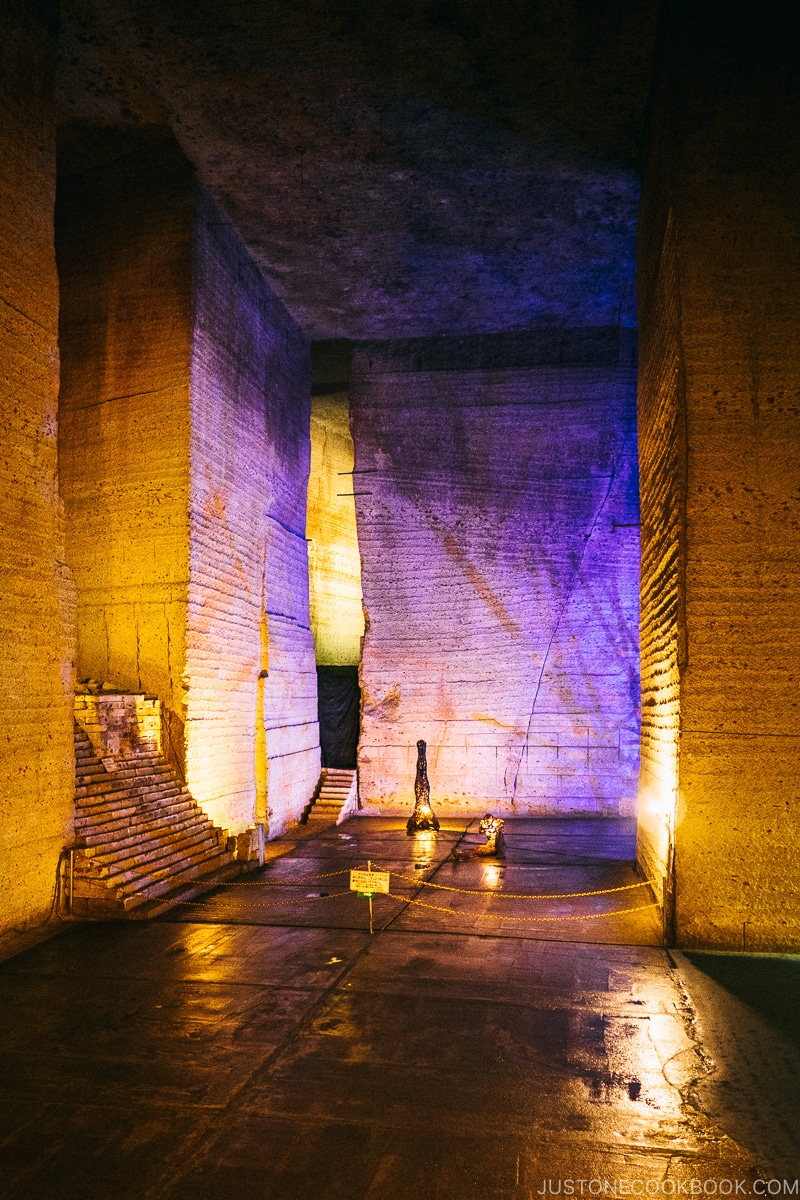
Oya History Museum is a museum dedicated to the history of Oya Stone located not too far from Nikko. If you are driving to Nikko from Tokyo, we recommend stopping by to check out this unique museum and explore its cavernous underground mine.
Where Is Oya History Museum
Oya History Museum is a short 30 min drive from Nikko but could be a bit tricky to get to by public transportation. If you take the Utsunomiya Station route from Tokyo to Nikko, it’s only a 30 min bus ride from Utsunomiya Station to the museum.
What is Oya Stone
Oya stone is a volcanic rock unique to the Oyamachi area near Utsunomiya. It is a light porous rock formed by volcanic ash from an eruption 20 million years ago. Oya stone has been mined in the area since the Edo period in the 1600s. At its peak, there were over 250 quarries in the area.
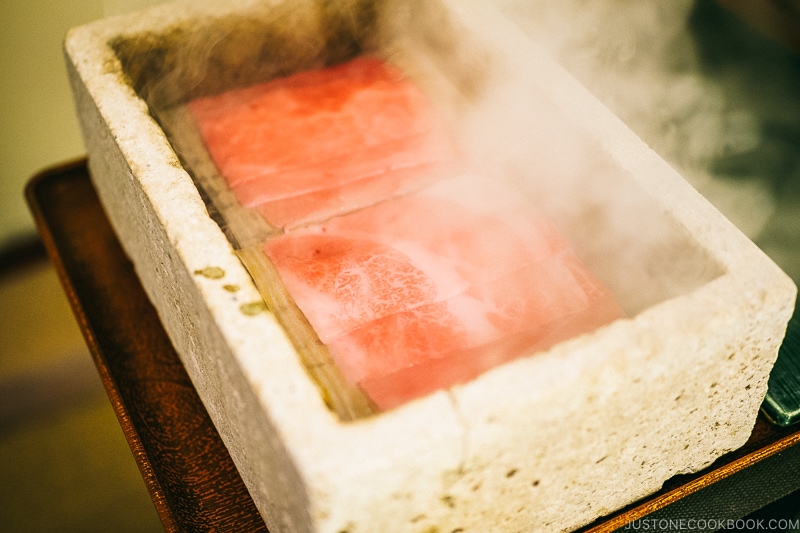
When we stayed at Hoshino Resorts KAI Nikko, the main wagyu main course was steamed in a box made of Oya stone and so was the drink coaster. The most famous use of Oya stone is by Frank Lloyd Wright during the construction of the old Imperial Hotel in Tokyo (it’s now been moved to Museum Meiji-Mura).
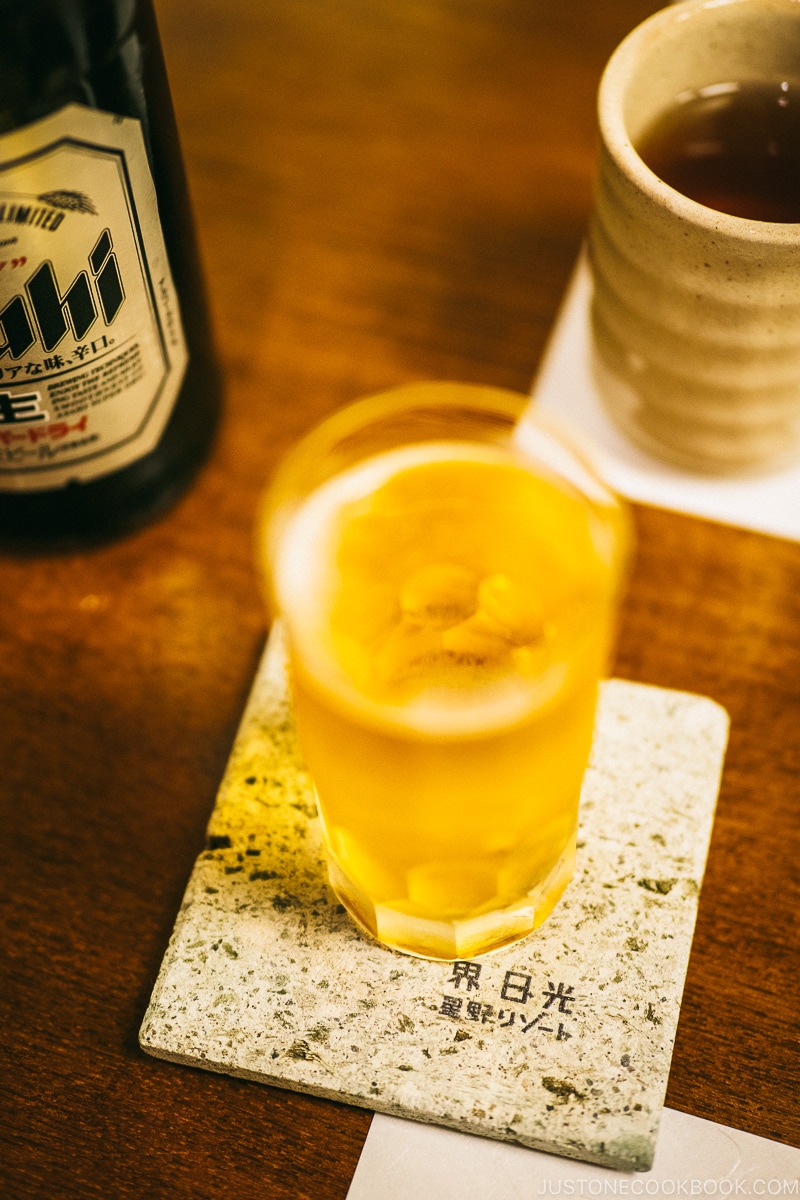
Oya History Museum
When you get to the museum, you can already see the on the nearby hillside evidence of mining in the past.
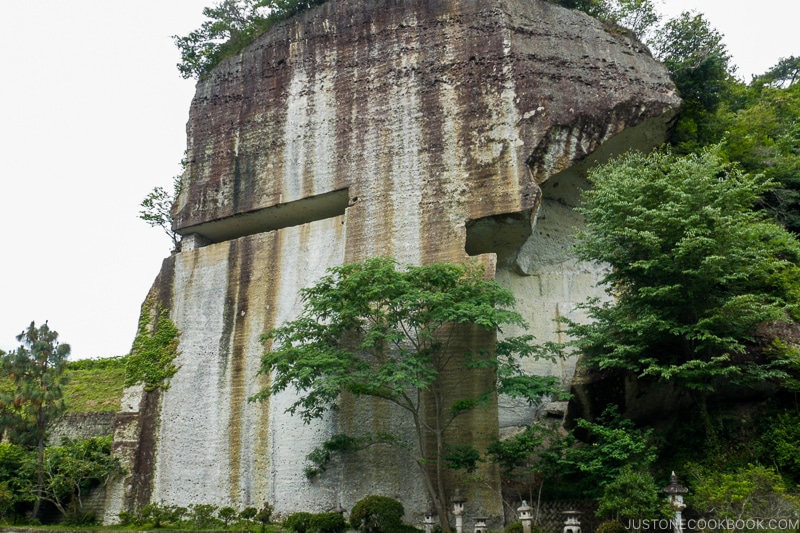
The exterior of the museum resembles a simple one-floor shop. On the main floor of the museum are the ticket booth and exhibits on the history of the Oya stone. The exhibits are on the history of Oya stone mining and the tools that were used for excavation.
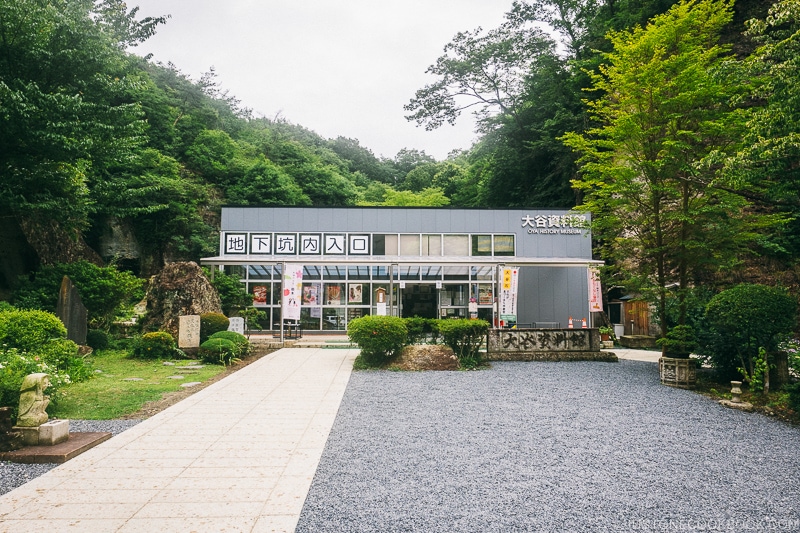
Oya History Museum Underground Quarry
There’s a staircase from the museum that leads downward and at the end of the staircase is the entrance to the unbelievable underground world. As soon as visitors get to the underground entrance, they are greeted by a massive hall. When we went to the museum it was a hot summer day around 95 F (35 C) and inside the save it was around 50 F (10 C). It felt like we walked into a freezer. Not only were we surprised by the enormous cave our body also experienced a very sudden drop in temperature.
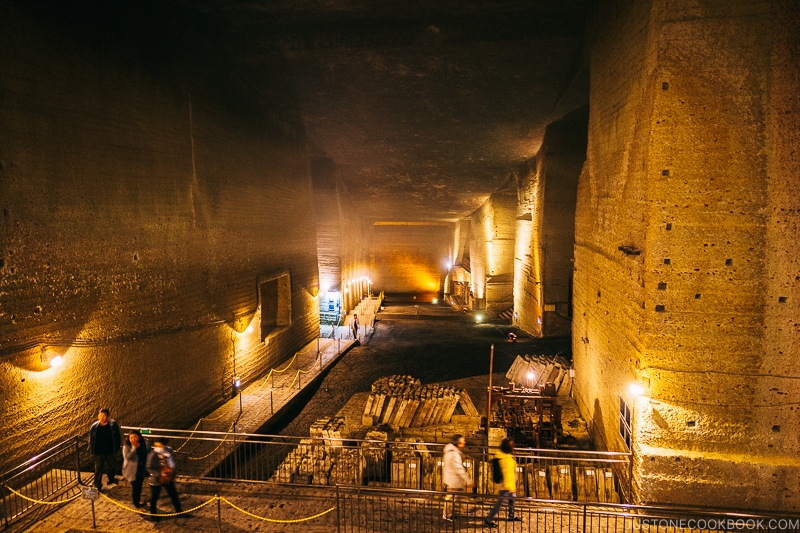
We followed the metal staircase that leads down into the quarry and started walking along the roped path. Looking carefully at the walls we could see the entire cave manmade.
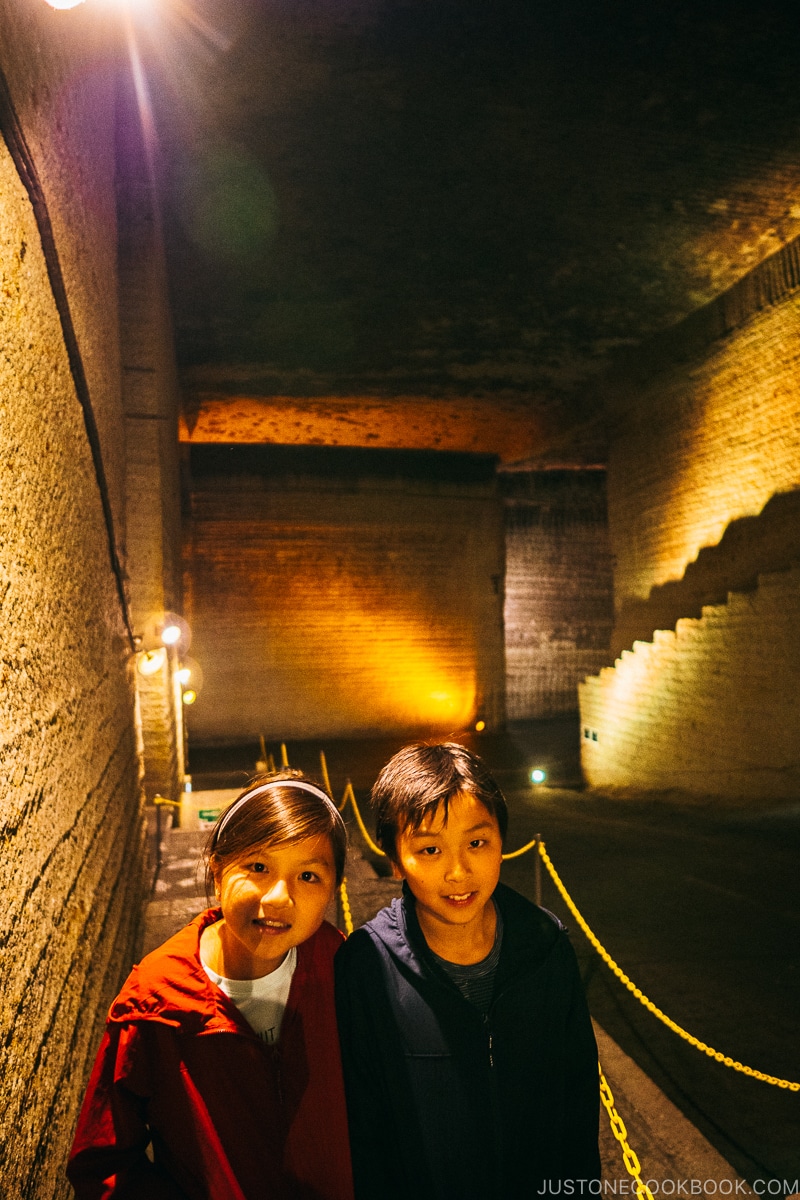
Inside the cave, there’s the main pathway for visitors to follow and also some areas for visitors to explore freely. The underground quarry is about 5 acres (20,000 sq meters) so imagine its size! Off the entrance cave, the paths lead deeper and at some points, we were close to 100 feet below ground (30 meters). In many of the larger rooms, there are art exhibits on display.
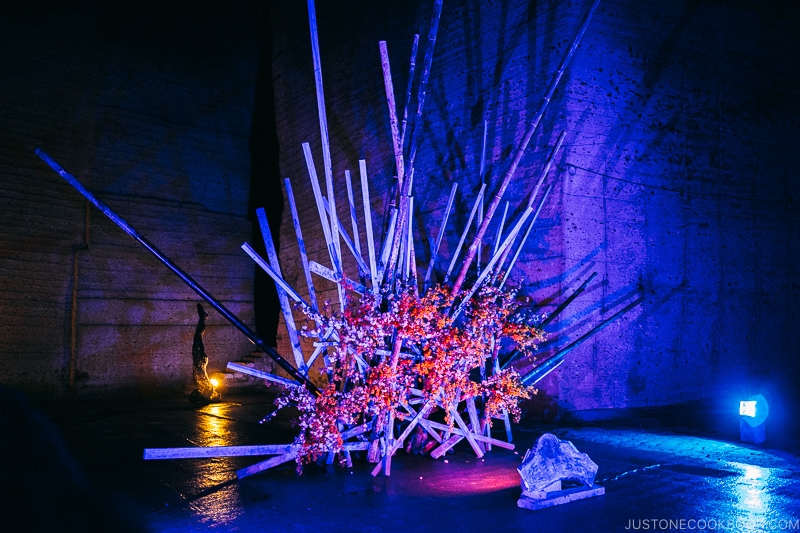
It’s difficult to describe how large the rooms are, but the ceilings are easily 30 feet high (10 meters) in the images below. The mine closed down in 1986 and before then it was in operation for over 70 years. What’s mind-boggling is until 1959, Oya stone was excavated by hand and the hand tool marks can still be seen on the walls.
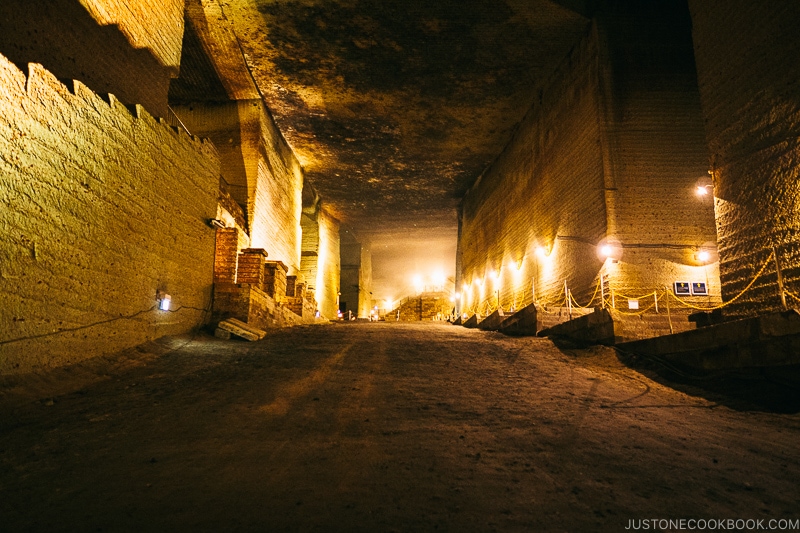
In 1960 the excavation was mechanized and patterns can be seen from the machine engraving.
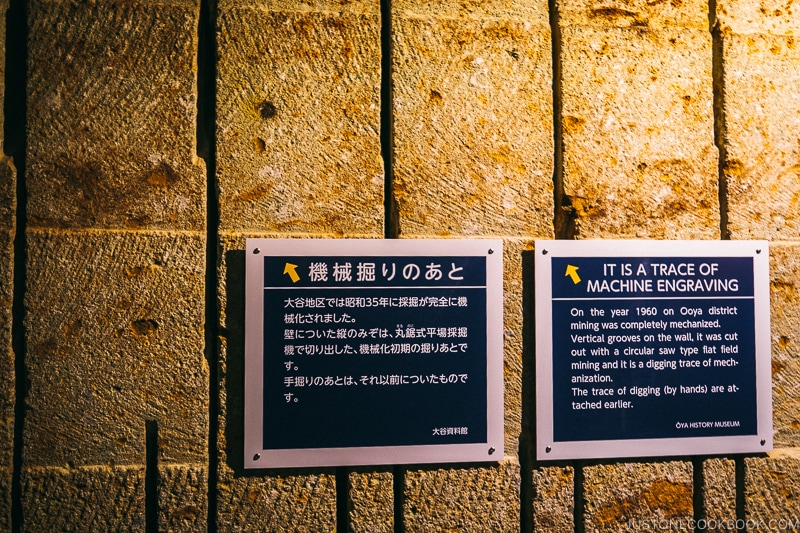
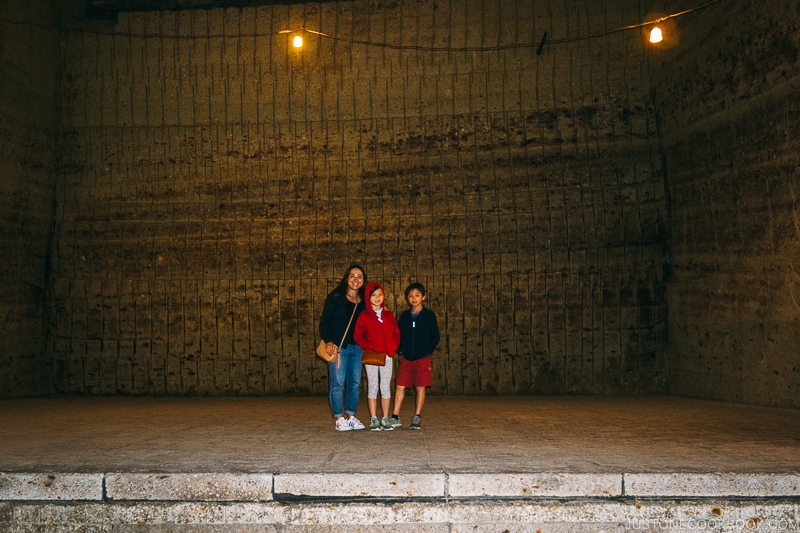
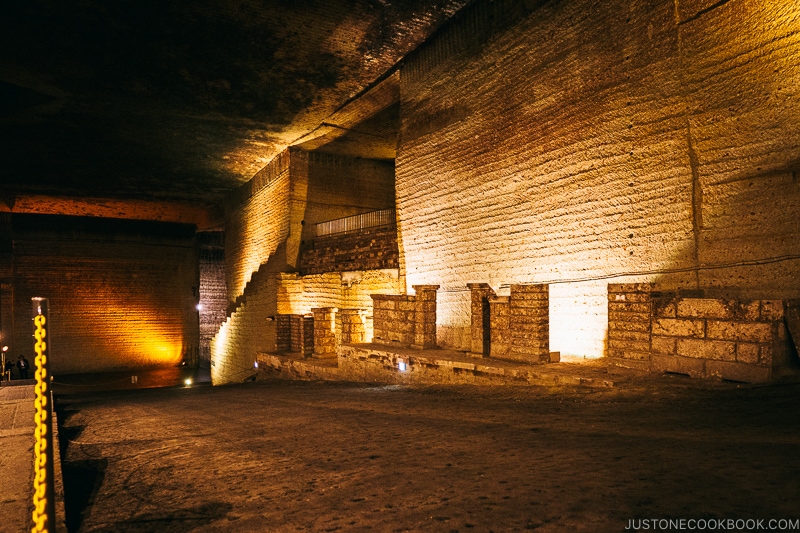
Current Uses for Underground Quarry
Today, besides being a museum is it also used as an event hall, concert hall, and wine storage among other uses. Many companies including Dom Perignon, BMW and Mazda had their new products and cars revealed inside the underground quarry.
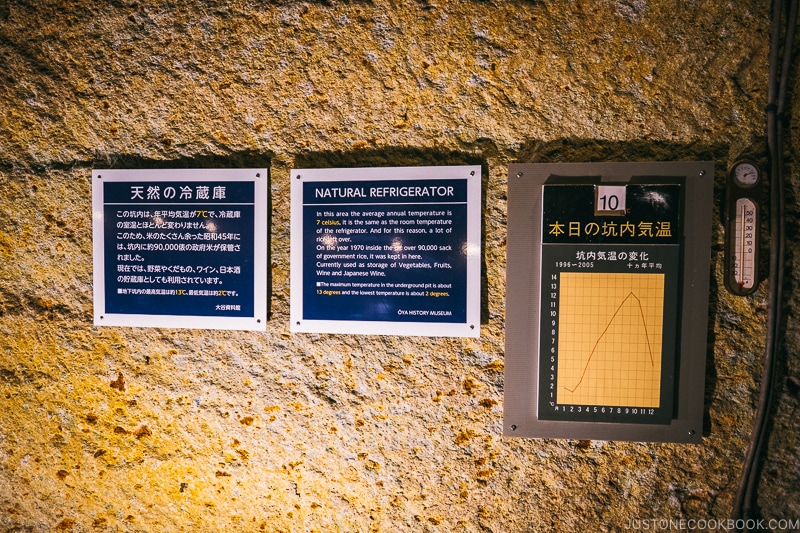
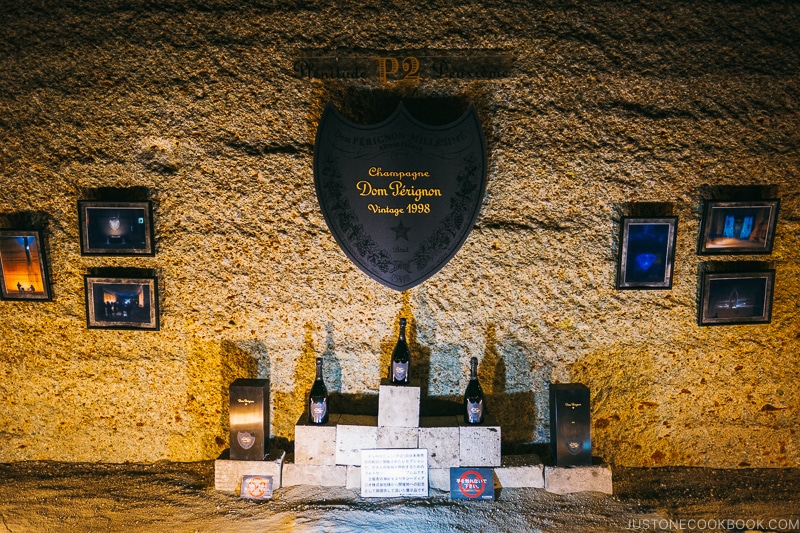
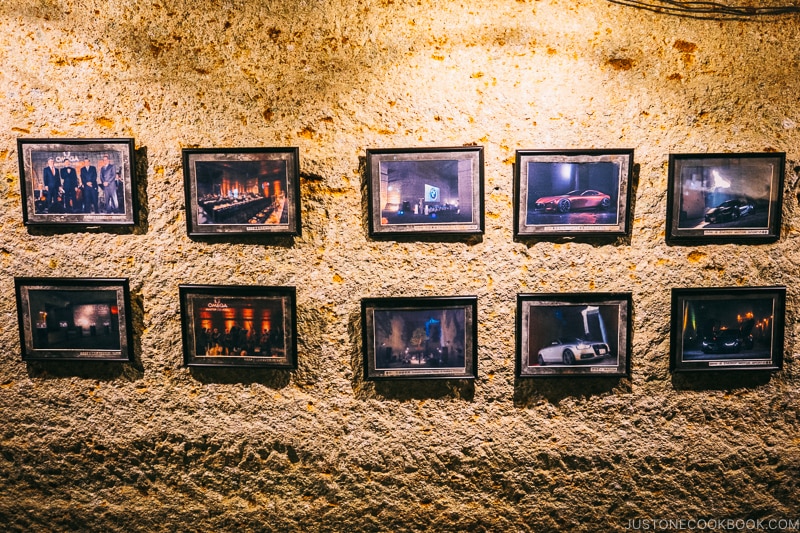
We spent about 45 minutes walking around the various rooms and exploring the quarry before we got too chilly and started heading back up.
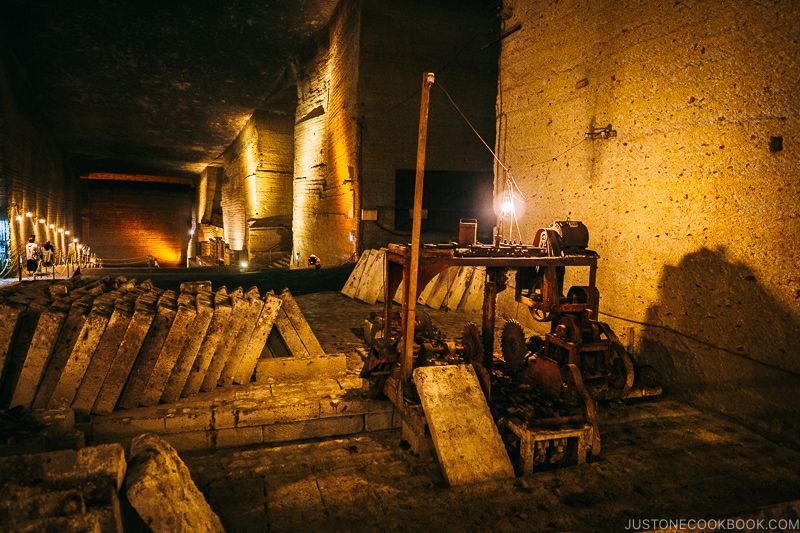
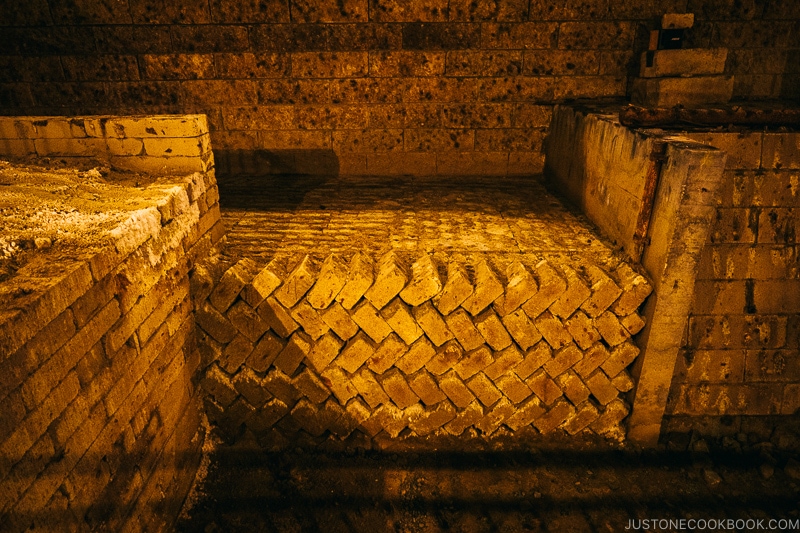
Our family had a blast at Oya History Museum and it’s something we’ve never seen before. It’s hard to believe that it exists until you’ve experienced it yourself so we highly recommend checking it out. Just remember to dress warm!
As always, thank you for reading our Nikko Travel Guides and we’ll see you soon in Hakone, one of our favorite hot springs areas in Japan.

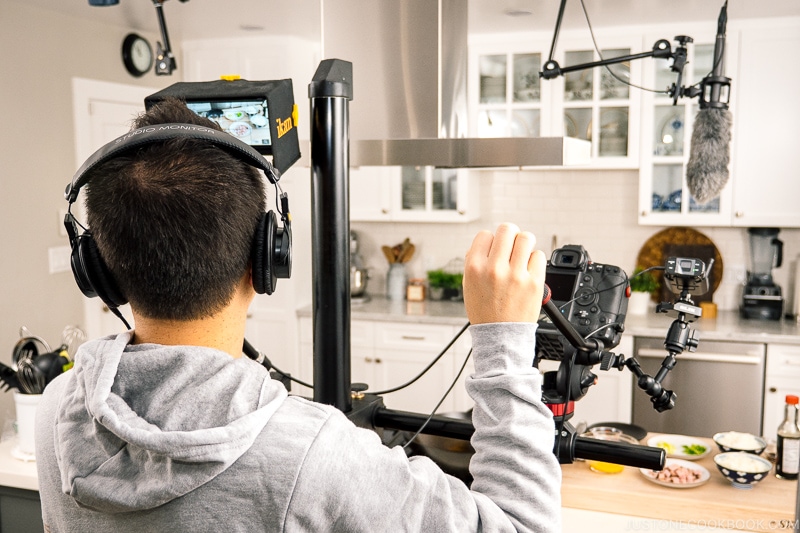









Very interesting article, I had not heard of the stone before.
Thank you for stopping by Philip. It’s not as popular as before but it’s used in many buildings in Japan. By the way, we love your work and purchased your book from the Etsy store.
Cheers
Hi Nami,
Thank you so much for buying the book. I really appreciate it. Would you like it signed for you and your husband?
I will ship it once I hear from you.
Thanks,
Phil Jones
Hi Phil,
Thank you so much for the kind offer, I sent you an email on the request. Looking forward to your book.
[…] Oya History Museum 大谷資料館 […]
Love your food and travel blog, thank you very much for all the time and efforts you put in. One quick question about your most recent Saba Oshizushi, you spelled “Zushi” not “Sushi”, is it a typo or the way it should be pronounced.?
Hi Echo! It’s not typo. So… when you say sushi by itself, we always say sushi. But when it’s attached with another word, it tends to become zushi. It’s basic Japanese language rule (grammer rule).
Example includes:
Oshizushi (pressed sushi)
Inarizushi (inari sushi)
Makizushi (roll sushi)
Chirashizushi (chirashi sushi)
Kaitenzushi (conveyer belt sushi)
etc etc…
Same goes to Tofu and Dofu
Mabodofu (Mapo tofu)
Koyadofu (Dried tofu)
Iridofu (it’s a name of the dish)
Agedofu (deep fried tofu)
Hope this makese sense. 🙂